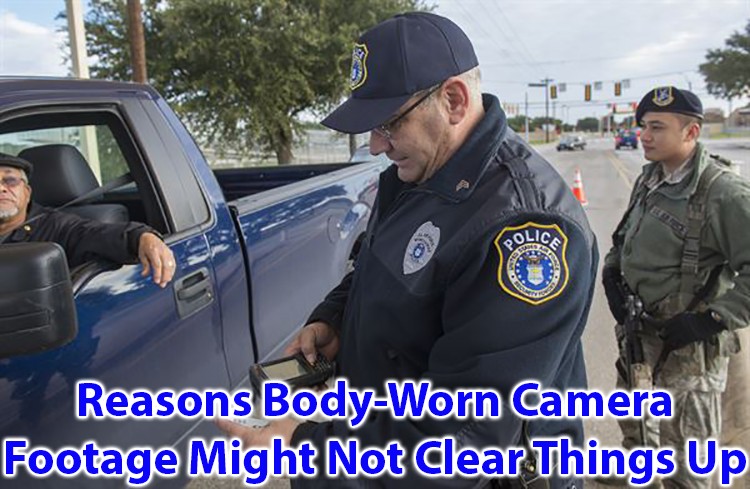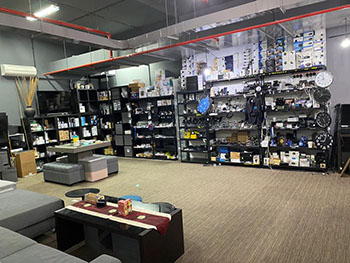Reasons Body Worn Camera Footage might not Clear Things Up
Footages from body-worn cameras have been able to solve any problem, ranging from; vindicating police officers who are being accused of wrongdoings they aren’t guilty of and correcting the general behavior of police officers while on patrol. The general belief that the footage from body-worn cameras will show everything that happened when there is a critical incident that involves the police and civilians. With the body-worn cameras it has been easier to curb the unnecessary use of force by officers, this view was shared by; the police department, politicians, civil liberties and the majority of the public. It was definitely getting support from the major populace, it was almost impossible to not implement it. The hope of the body camera has been to continue uncovering the conflicts between police and citizens that eventually become fatal or near-fatal. This hope has led the government to spend millions of dollars to secure the cameras and also ensure its widespread.
It’s normal for people to trust what they see and can perceive hence having video footage of confrontation and interaction between citizens and police have become very important. Research has suggested some reasons that make body cam footages not completely reliable. We shall look into them.
The first setback is the limitation of technology, the footages from a body camera provides a restricted view of a particular accident. What people end up seeing isn’t really clear and you can only see from where the camera is placed. This placement factors can affect the view, some other limitations created by the camera are an environmental obstruction and the camera lens. This means that obstructions around can greatly disturb what is seen, the camera lens can also be a major setback if the lens isn’t powerful enough then video might be shaky and suffer from noise effect. Most importantly, people tend to perceive diverse stimuli in manners that matching their beliefs. This s a phenomenon known as “wishful seeing”. When this is related to police footage, this means the attitude the police can actually influence For example, when the video of an officer interacting with a citizen is shown, are asked to focus mainly on the officers since those who reported feeling they have similar values to a police officer or perhaps have a shared similar background. They see that such police officers action is one that is less incriminating. Such people are also the ones who recommend a more lenient punishment for the officer, compared to those who focus on the officer the entire time. Hence when you trust the police, you share their values and when they act you tend to believe their actions are more justified.
Another problem with the body camera footages is that people would tend to look at the reaction and behavior in the video once there is no officer in the video. People generally tend to sympathize with the suspect more when watching videos, most tend to neglect the role a detective has to play in extracting information and the truth. So most times when a police interrogation is ongoing and since naturally the camera is directed to the suspect people tend to just overlook the detective doing his job to uphold justice and keep the society safe. Instead, they focus more on the suspect thinking about the suggestive and coercive approach they might be using, when all these happens they become sympathetic with the suspect who for all we know might be guilty. By these it is easy to conclude that the viewing perspective of the camera tends to provide the information people focus on. This likewise is similar to the body camera use as people would tend to ignore the duty the officer has to do and focus more on the person they see in the video. Although if there is a bystander around and get the incident recorded, it could paint the entire case in a whole new look drawing a different conclusion from the entire case.
The perception of individuals towards the police greatly influences how they see them in the footage or even react to video footage concerning them. A person could so much hate the police that when he sees footage with them in it, he tends to find something against them while also being fully against anything they do in such footage. It was discovered that people who identified with police, as relatives or even work in a department tend to be more trusting of the police and happen to more likely rely on their reports. They often make sense of whatever is seeing in the video footage. There are cases where people are shot by mistake perhaps the officer thought he saw them wielding a gun or a knife, they report the case as though the citizen was holding a knife even though there was no knife or gun inside the video. Now those who view the video and are related to the police try to make sense of the entire situation and relate it with the report that was filed even though it didn’t relate with the video. In the end, the officers report served as a very misleading piece of information one which was guiding the investigation. But the problem with such misinformation is that they are very difficult to correct, even when the people in charge are told about the wrong details and even further told why it is wrong.
While looking at these issues, it has just a simple solution which would be to let everyone know about their biases in thinking and to change the deformed thinking but as we know it, it is easier said than done. People don’t accept the change to their thinking patterns. There is some key point information that must also be noted to help know that the body camera isn’t all perfect and don’t completely clear things up, they are:
- Cameras do not follow the eye movement, they simply view from where they are placed. Many times if you glance away from where you are viewing, the camera might not even capture what is right before you.
- Body camera encourages second-guessing, under very calm and comfortable conditions people could play the shoulda coulda game, they could play footage so many times then set to slow motion and then pause and pick a scene out coining it to their scrutiny.
- Absence of timestamps in video footages might prove difficult when accessing, it is important there is timing in videos as it helps make crucial and more correct evaluations and deduction. A video without timestamp can be quite misleading.
- A single-camera might not be enough to clear an investigation when judging the angle, ambient lighting and many other camera elements. In a case that has to do with a fight, a single camera might make things very unclear.
- The body of the recorder could block what is being viewed, you could be shooting a gun or a Taser and the body camera would be unable to see that all that would be seen is just your arm extending out. These things prevent a reviewer from being able to make good judgment.
- A camera is limited to seeing only 2 dimension, due to the inability of cameras to record depth of a field which the human eye does so well, judging distance in footage might be quite impossible.
- The relative speed of the camera is different, cameras are able to record things faster than normal store cameras or even closed-circuit cameras. It is very possible to lose some very important events from these very fast frames as they would appear on those cruder devices.
- Some important danger cues are impossible to record with cameras, the “tactile cues” which are actually very important to officers when determining the amount of force to use are almost impossible to capture on footages. A very good example is the retentive tension, an officer can tell if a suspect is going to resist and act but that won’t be seen on camera since it isn’t physical.
- Cameras see way better than humans doing under a very low light setting, an officer might have a case to handle at night and probably have to head down in the sewer or a very dark alley where the suspect is found, he would try to apprehend him carefully but the suspect might be holding a phone and the officer who can’t see well might perceive it to be a gun and shoot. Once it’s reviewed later and seen to be a phone it becomes a complication.
By all these it becomes quite a conclusion that; having the body-worn camera doesn’t completely clear things up, the footage can be confusing and even very inadmissible in some cases. These issues come up often and cause confusion in some departments on what to do in some cases sometimes they end up guessing in the end. Other times they make a decision that could either be right or wrong.









